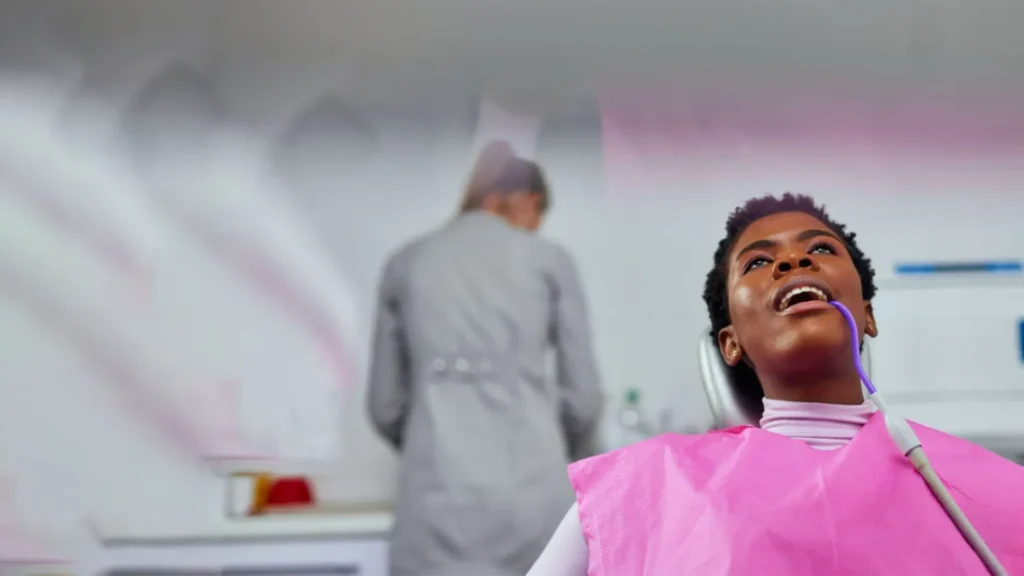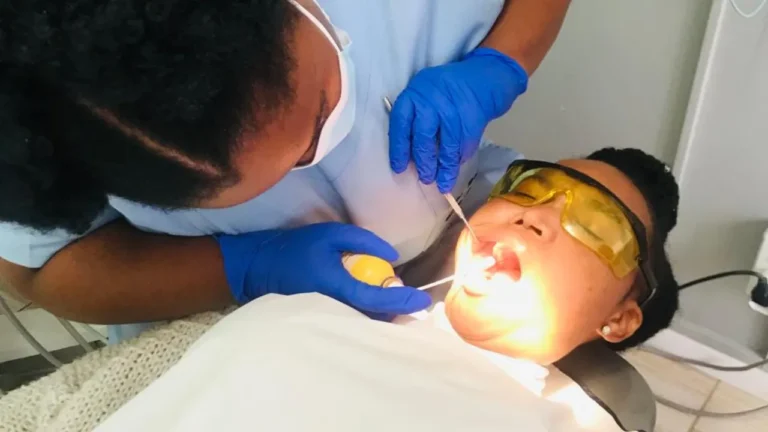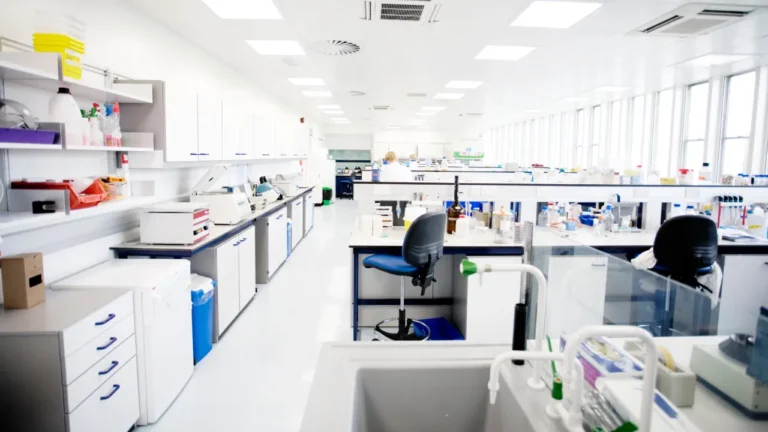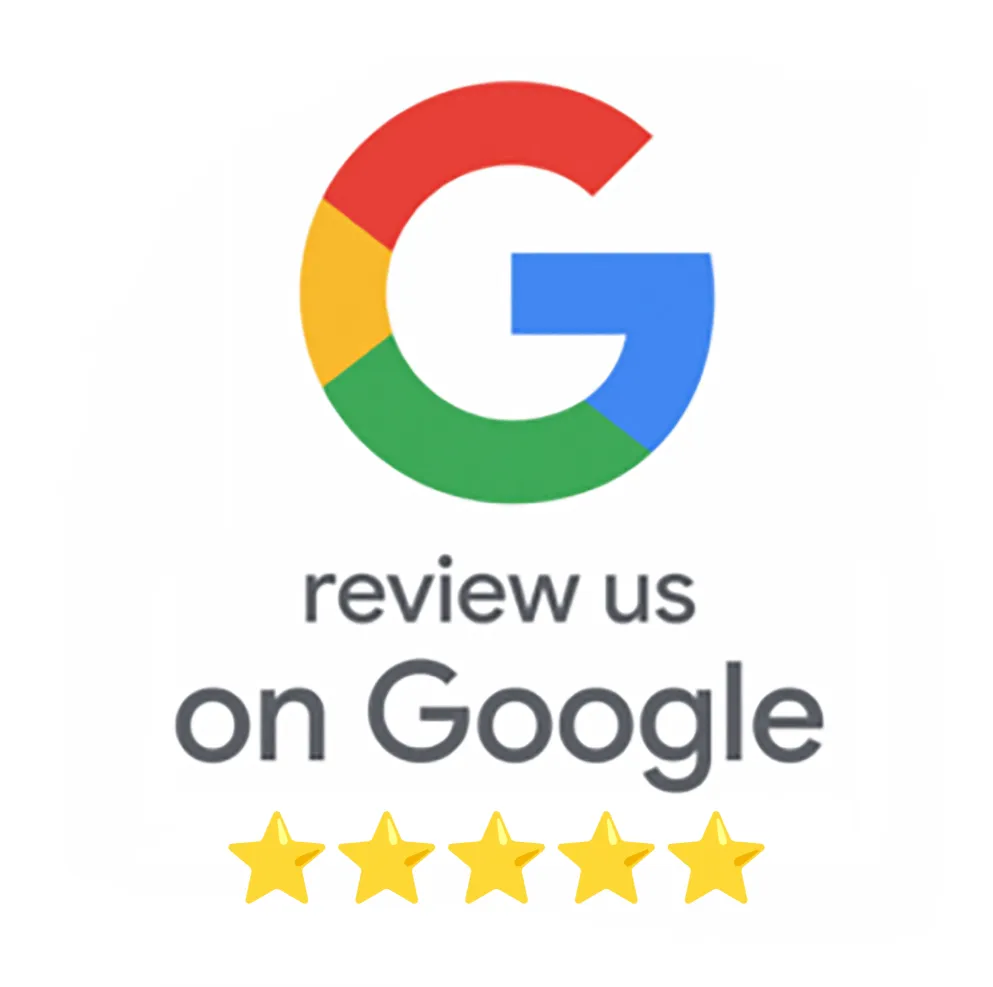In this blog post, we’ll dive into the exciting realm of teledentistry and its potential to revolutionize oral healthcare in the Rainbow Nation.
Imagine this: a world where visiting the dentist doesn’t necessarily mean a trip to the clinic but could be as simple as a video call from the comfort of your own home.
That’s the promise of teledentistry, and we’re here to unpack its significance in the South African context.
The State of Dentistry in South Africa
The current state of dentistry in South Africa presents a mixed picture. On one hand, the country boasts a well-established dental profession with a long history.
- The South African Dental Association (SADA) was founded in 1998 and continues to play a pivotal role in the profession.
- There are five dental schools in South Africa that train dentists to a high standard.
However, there are significant challenges:
- Shortage of Dentists: A 2017 study found that there is only one dentist per 10,000 people in South Africa, far below the World Health Organization’s recommendation of one dentist per 6,000 people.
- Rural Gaps: The shortage is particularly severe in rural areas, where access to quality dental care is limited.
Despite these challenges, there are positive developments:
- Increased Government Investment: The government is starting to invest more in oral healthcare.
- Dentistry Development Foundation Trust (DDFT): This non-profit organization is actively working to address the shortage of dentists.
Understanding Teledentistry
Teledentistry is dentistry practiced remotely with the help of technology. It leverages telecommunications and information technology to provide dental care, consultations, education, and public awareness.
Key Features of Teledentistry:
- Communication Methods: Video conferencing is the primary mode, but it can also include text messaging, phone calls, emails, real-time chat, and private message boards.
- Applications:
- Initial consultations for dental problems
- Follow-up appointments after in-office procedures
- Discussing test results
- Minor dental emergencies
- Oral health education and advice
Teledentistry Initiatives in South Africa
Although there isn’t widespread adoption of teledentistry in South Africa yet, the concept holds great promise in addressing the country’s existing challenges in dental care.
Potential Benefits of Teledentistry:
- Increased Access to Care: Teledentistry can help bridge the gap for people in rural areas or those with limited mobility. Consultations and follow-ups can be done remotely, improving accessibility to dental professionals.
- Reduced Costs: Virtual consultations are often more affordable than traditional in-person appointments, benefiting both patients and the healthcare system.
- Improved Efficiency: Teledentistry streamlines workflows for dentists, allowing them to see more patients and reduce appointment backlogs.
Existing Challenges:
- Regulation and Reimbursement: There’s a lack of clear regulations and reimbursement frameworks for teledentistry practice and coverage by medical aids.
- Digital Divide: Not everyone in South Africa has reliable internet access or the technology needed for teledentistry consultations.
- Dentist Acceptance: Some dentists may hesitate to embrace teledentistry due to concerns about the thoroughness of remote diagnoses or the patient-dentist relationship.
Conclusion
The future of dentistry in South Africa is evolving, with teledentistry at the forefront of this transformation. By leveraging technology to bridge gaps in access and improve efficiency, we can ensure that all South Africans have access to quality dental care.
So here’s to a future where the dentist’s office is just a click away!








